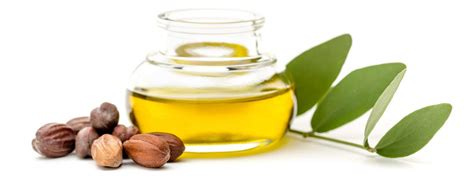Ingredient Spotlight - Jojoba Oil
Jojoba oil is the best oil to be putting on your skin. Here’s why.
The History
The jojoba plant is native to the Southwestern area of America.
The jojoba shrub is found particularly in Nevada, Arizona, California, and Mexico. It grows particularly well in deserts and dry areas. Several native American tribes used the oil from the jojoba shrub to sooth, moisturize, and heal skin.
There was a resurgence in the use of jojoba oil when several movements advocated for the protection of whales.
Whale hunting had been around for thousands of years. Movements like “Save the Whales” and “GreenPeace” exposed many cruelties in the whaling industry and promoted jojoba oil as a humane alternative. Jojoba oil replaced many of the of whale oil when whale hunting was banned in 1986.
The Science
Jojoba oil is ideal for moisturizing our skin.
The chemical makeup of jojoba oil is similar to our own skin oils. Due to its low comedogenic rating, it is unlikely that jojoba oil will clog your pores. Like tallow, it contains valuable oleic acid, stearic acid, and palmitic acid.
Oleic Acid (Omega fatty acid 9) - Oleic acid is found in our skin oil (sebum), but also in a few plants, such as the jojoba plant. It is an effective moisturizer making it optimal for dry or older skin.
Stearic Acid - Stearic acid has a gentle moisturizing and cleansing effect. It is able to bind water, oil, and dirt together (this is called a surfactant), giving it cleaning properties. The skin barrier can be strengthened by stearic acid, as apposed to many cleansers which weaken and disrupt the skin barrier.
Palmitic Acid - It is valuable for helping dry, flaky skin. It has emollient (smoothing) properties which help strengthen the skin barrier and retain moisture for plump, youthful looking skin.
These are just a few of the many benefits of jojoba oil.
It is known as the most compatible plant oil with human skin. With cleansing and moisturizing properties, it has multiple uses. It has a low comedogenic scale rating, so it is safe to use with skin conditions such as acne.
If you would like to try a tallow and jojoba oil moisturizer, check out our Esty shop!
Popular Uses
Moisturizer
Jojoba oil makes a great addition to any moisturizer especially because of its smoothing effects. It is safe to use on many skin types due to its ability to rejuvenate older skin and sooth acne prone skin. It can moisturize dry skin while controlling oil production in oily skin.
Cleanser
Jojoba oil is a viable choice for oil cleansing. Oil cleansing is the process of using an oil to clean dirt or grime off of one’s face. Oil cleansing is especially recommended for anyone with sensitive skin that can be disrupted by modern cleansers. Due to its emulsifying properties, it makes an ideal cleanser.
Cuticle Cream
Jojoba oil can soften cuticles. Cuticles can become cracked and break. Applying a cuticle cream or oil can help prevent this painful breakage. Because jojoba oil contains vitamin E, using it in a cuticle cream can strengthen nails.
Conclusion
Jojoba oil is a valuable, multipurpose, and effective oil.
Our skin is similar to the chemical makeup to jojoba oil and compatible with it. It has many health benefits, particularly for skin. It can be used as a moisturizer, cleanser, and cuticle cream.
Thank you for reading!
Arete Tallow







